Sibiu is renowned for its authentic preservation of culture through museums that are open all year round, making it an important tourist destination on the European cultural and historical map. With 50 museums and fascinating collections, this Transylvanian city offers a rich cultural experience, where you can discover everything from classical art to unique ethnographic exhibitions.
On this cultural journey through Sibiu, you will explore gems such as the Brukenthal National Museum, one of the oldest museums in Romania, founded in 1817, or the impressive Astra Village Museum, the largest open-air museum in Europe. You will also learn about the Pharmacy History Museum, opened in 1972 and located in the building where the first pharmacy on the territory of present-day Romania operated, documented in 1494. Sennse Boutique Hotel, located in the heart of the city, offers you the ideal place from which to set off on a leisurely cultural tour through the charm of these historical institutions.
Translated with DeepL.com (free version)
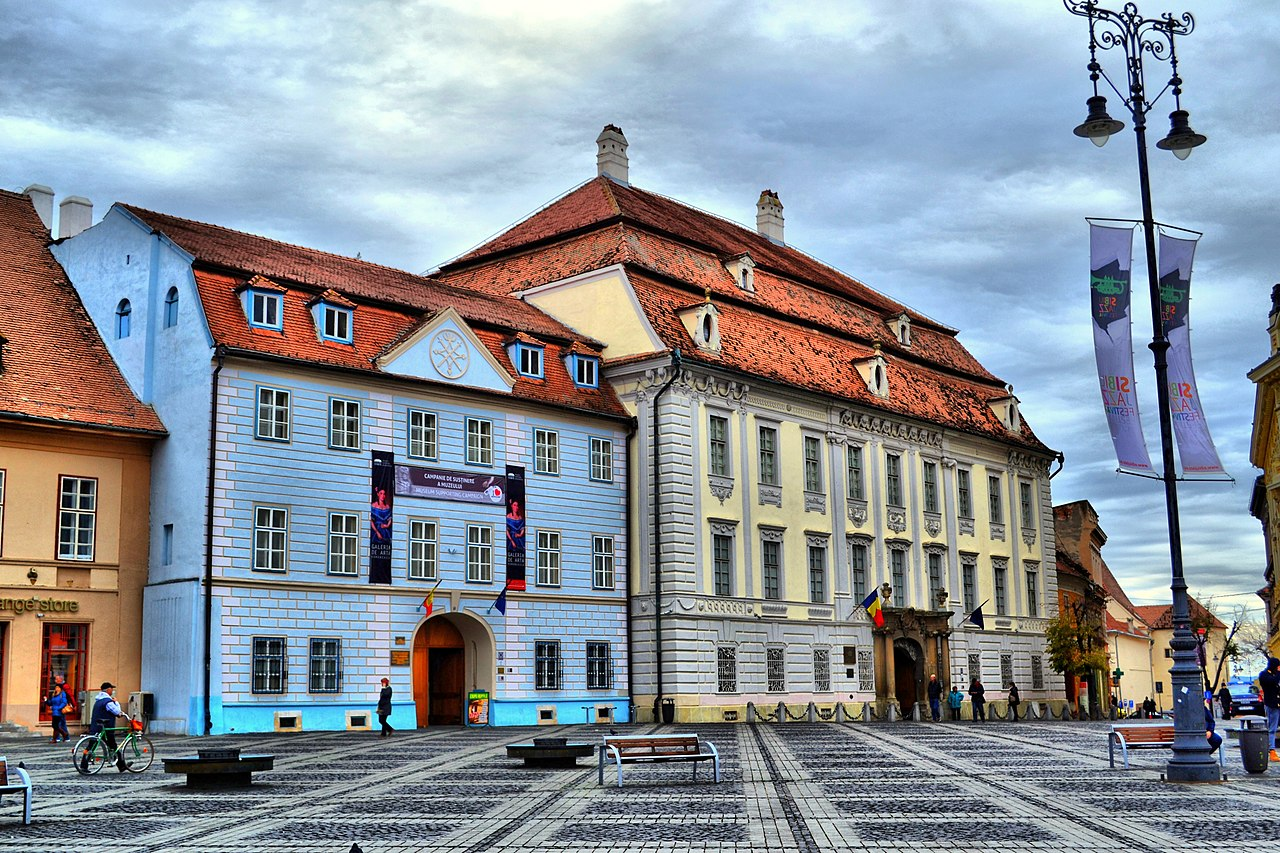
Image source: wikimedia.org
The tour often begins with the three cultural institutions that define the city’s identity. These concentrate the essence of Sibiu’s history and art, each offering visitors a unique perspective on the city’s cultural heritage.
In Piața Mare, the imposing Brukenthal Palace catches the eye with its elegant Baroque architecture, built between 1778 and 1788. This architectural gem houses Romania’s first museum open to the public (1817), founded by Baron Samuel von Brukenthal, governor of Transylvania. The impressive collections began to take shape as early as 1790, eventually becoming a museum complex with six distinct locations.
The European Art Gallery houses approximately 1,200 works belonging to the main European schools of painting from the 15th to 18th centuries. The uniqueness of this museum lies in the fact that it is the only institution in Romania that holds works signed by Van Eyck, Memling, and Titian. In addition to the art collections, visitors can also admire the Brukenthal Library with approximately 300,000 library items, including rare manuscripts and incunabula.
In the immediate vicinity, the History Museum welcomes visitors in an impressive ensemble of Gothic civil architecture. The Altemberger House, built by Mayor Thomas Altemberger between 1470 and 1491, served as the town hall for 400 years, until 1948.
The permanent exhibition takes you on a fascinating journey through the history of the communities of southern Transylvania, starting with the Paleolithic era and ending in the modern period. Among the exceptional collections are “Gold Coins and Medals” and “Liturgical and Secular Silverware Treasure.” For a complete experience, each room is equipped with LCD screens that provide detailed information about the respective era, and the labels are translated into German and English.
In contrast to historical styles, the Sibiu Museum of Contemporary Art brings current artistic trends to the local cultural landscape. Located on Tribunei Street, the museum maintains an important position in promoting Romanian contemporary art, representing a strong alternative to the National Museum of Contemporary Art in Bucharest.
What sets this space apart is its focus on the public and its free and innovative presentation of exhibitions. A unique concept for Romania is the visitable warehouse, where visitors can admire 34 large sculptures in the corridors, while on the first floor there are 205 paintings, 15 tapestries, and 95 three-dimensional pieces on display. A glass-walled room on the second floor offers a broad view of the storage area, thus completing the visitor experience.
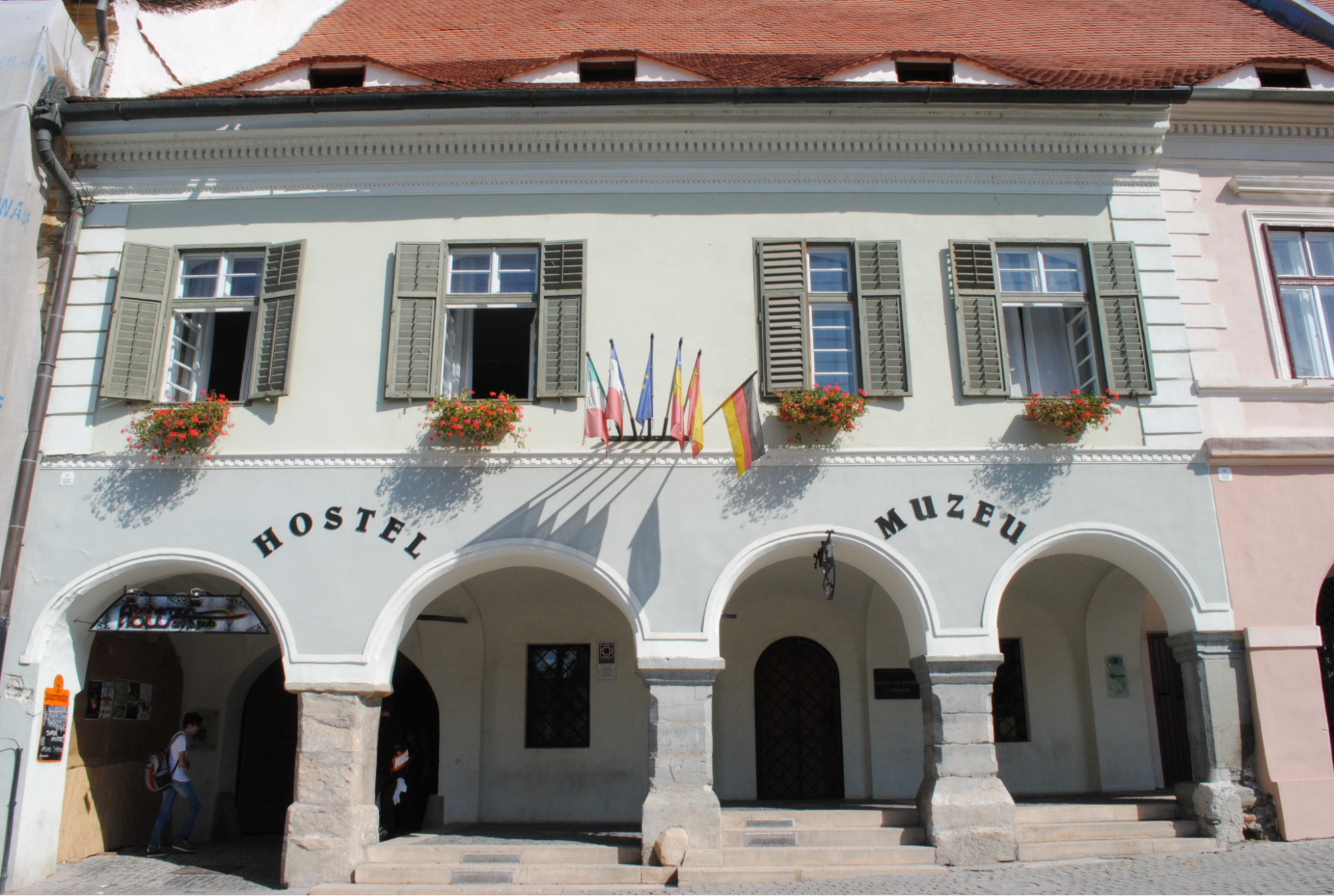
Image source: wikimedia.org
Beyond its iconic museums, Sibiu also hides several smaller museums with fascinating stories that are worth discovering during a cultural getaway.
In Piața Mică, in a monumental building from 1568 with Gothic and Renaissance elements, there is a museum that is unique in Romania. Opened in 1972, the Museum of Pharmacy History preserves the memory of the first pharmacy on Romanian territory, documented in 1494. The impressive collections include over 6,600 items illustrating the evolution of pharmaceutical science and technology over three centuries.
Organized like a classic pharmacy, the museum includes the dispensary (with Viennese furniture from 1902), the laboratory, and a homeopathic collection. This last component is particularly valuable, comprising over 2,900 items, and recalls the period when Samuel Hahnemann, the founder of homeopathy, lived and worked in Sibiu between 1777 and 1779.
Opened in 1993, this museum is the first and only one in Romania dedicated exclusively to the culture and art of non-European peoples. Located in a historic building in Piața Mică, built in neo-Gothic style between 1865 and 1867, the museum houses approximately 3,000 objects from all corners of the world.
Among the exhibits are an Egyptian mummy with a wooden sarcophagus from the Ptolemaic period, dating back over 2,000 years, and a valuable collection of Nilotic weapons and African trophies. These pieces come largely from donations made by Saxon travelers to other continents in the 19th century.
Opened in 1966, this unique museum is housed in the former residence of Colonel August von Spiess, hunter to the Romanian Royal Family during the reign of King Ferdinand I. The museum’s collection comprises approximately 1,600 items, some of which are over 100 years old, including hunting trophies, weapons, and specific instruments.
The museum tour includes rooms dedicated to the history of hunting weapons, game birds, big game, and, last but not least, African trophies brought back by the colonel from a long safari. Many of the trophies on display have won medals at national and international exhibitions and competitions, which adds to the value of this unique collection.
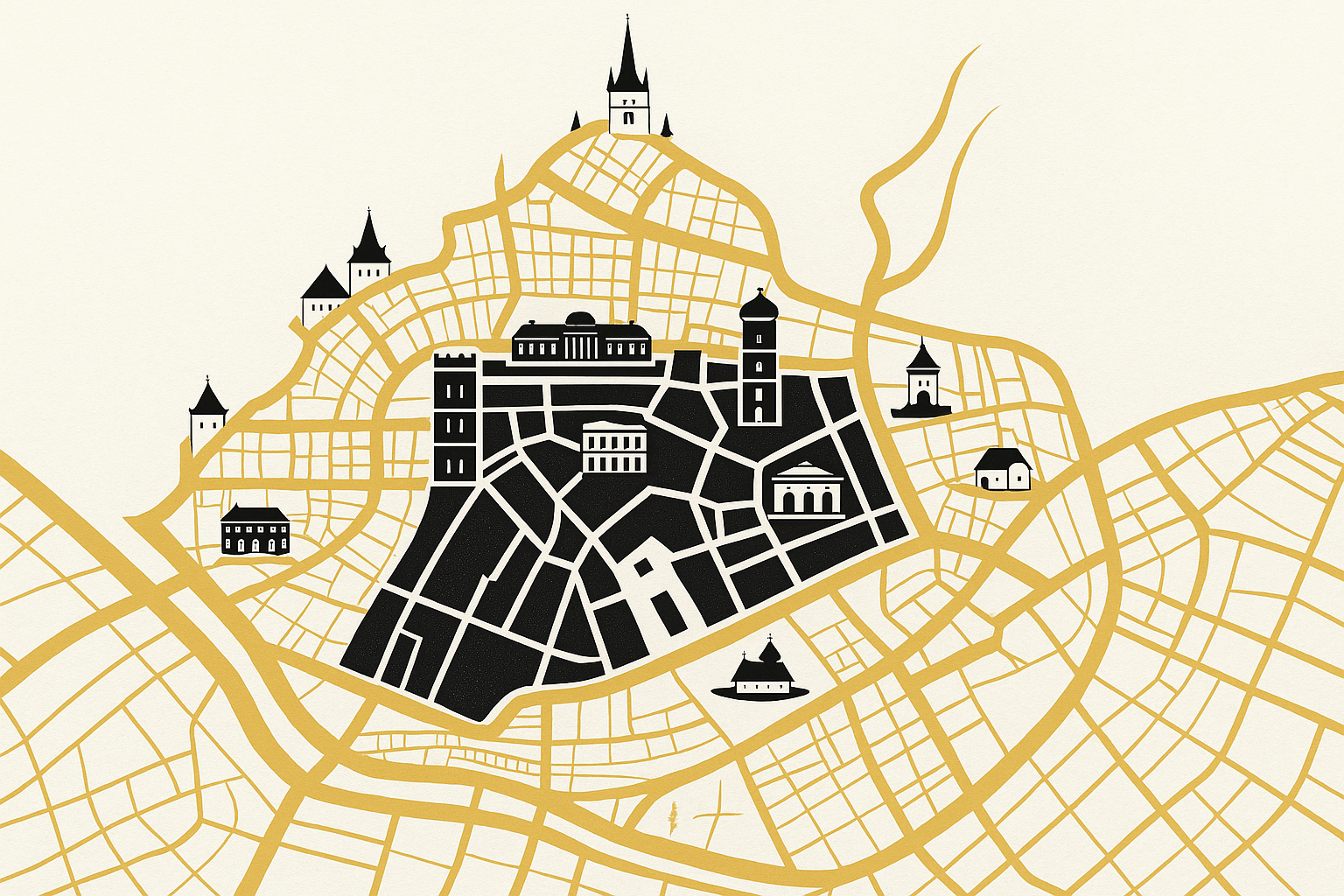
Starting from the comfort and elegance of Sennse Boutique HotelLocated at 23 Rotarilor Street, a fascinating cultural tour awaits you, just a few steps away from Sibiu’s main attractions. The privilege of being in the heart of the charming historic center offers you the perfect opportunity to explore Sibiu’s most valuable museums in a single day.
The first stop is the impressive Grand Square, surrounded by historic buildings such as the Brukenthal Palace and City Hall. The vibrant atmosphere, welcoming cafés, and excellent cityscape invite you to enjoy a moment of relaxation before embarking on your cultural journey. At the same time, this urban space is the perfect place for cultural events, fairs, and peaceful walks.
A few steps away is the Brukenthal National Museum, one of the oldest museums in Romania, founded in 1817. Its rich collections of European art draw attention to Transylvania’s cultural heritage. The Baroque-style building is impressive from the outside, and a refined cultural experience awaits you inside.
Continue on to Piața Mică to discover the Pharmacy History Museum, open Wednesday-Sunday from 9:00 a.m. to 5:00 p.m. Located in a historic building dating back to 1568, the museum preserves the memory of the first pharmacy in Romania. With a ticket costing just 16 lei for adults, you can spend around an hour exploring the fascinating world of alchemy and pharmaceutical science.
After a short break, head to the Museum of Contemporary Art, where 34 large sculptures and 205 paintings await your discovery. With an affordable admission fee of 15 lei, this modern space surprises you with its glass-walled room on the second floor, which offers a broad view of the warehouse.
Finally, relax with a coffee in Piața Mică, near the Franz Binder Museum of Universal Ethnography, the only museum of extra-European ethnography in Romania. Here you can admire the Egyptian mummy donated in 1907 and the exotic collections that take you on imaginary journeys around the world.
Discover cultural Sibiu starting from Sennse Boutique Hotel, a refined retreat from which every museum becomes a memorable stop on your own personal tour.
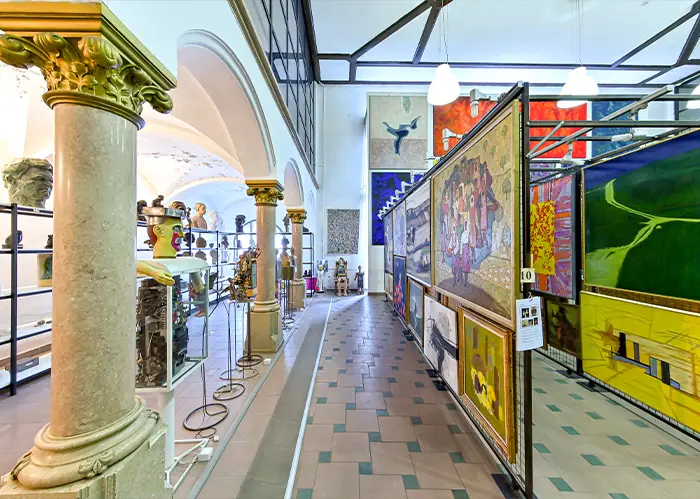
Image source: noapteamuzeelor.org
For a complete cultural experience in historic Sibiu, here is the practical information you need before setting off. Planning your visit to Sibiu’s museums is easy with the guide below, which helps you make the most of the city’s cultural wealth.
Most museums in Sibiu operate on a seasonal schedule. During the summer (March 21-October 21), museums such as the History Museum, the Pharmacy Museum, and the Hunting Museum are open Tuesday through Sunday from 10:00 a.m. to 6:00 p.m., closed on Mondays and the first Tuesday of the month. During the winter (October 21-March 21), the schedule changes slightly, with museums open Wednesday through Sunday, also from 10:00 a.m. to 6:00 p.m.
The Brukenthal National Museum has specific opening hours: closed Monday-Tuesday, Wednesday-Thursday: 10:00-18:00, Friday-Saturday: 11:00-19:00, and Sunday: 10:00-18:00. Good news for locals: on the first Thursday of every month, all Sibiu residents (with ID or birth certificate) and all pensioners enjoy free admission.
Also, in 2025, you can visit museums for free on special days: February 25 (official opening of the museum), March 8 (Women’s Day – free admission for women to the Museum of Contemporary Art), June 1 (Children’s Day), and December 1 (National Day).
Prices vary depending on the importance of the collections. For the Brukenthal Palace, adult tickets cost 50 lei, pensioners 25 lei, and pupils/students only 12.50 lei. At the History Museum-Altemberger House, prices are 36 lei (adults), 18 lei (pensioners), and 9 lei (pupils/students).
For those on a tighter budget, the Hunting Museum and the Museum of Contemporary Art offer affordable prices: 12-15 lei for adults and 3-3.75 lei for students. If you want to visit several museums, you can opt for a single ticket valid for 48 hours: 120 lei (adults), 60 lei (senior citizens), and 30 lei (schoolchildren/students).
The ASTRA Museum in Dumbrava Sibiului has separate admission fees: 35 lei for adults, 15 lei for seniors, and 9 lei for students. Annual passes are also available: individual (150 lei) or family (300 lei).
Most museums are concentrated in the historic center, within walking distance of each other. The Brukenthal National Museum is located at 4-5 Piața Mare, the Franz Binder Museum of Universal Ethnography at 11 Piața Mică, and the History Museum at 2 Mitropoliei Street.
For an enriched experience, download the ASTRA Museum App, available for free on Google Play and the Apple Store. It offers an audio guide for approximately 30 households in the museum, a digital map indicating places to visit, restaurants, and nearby facilities. The app also provides notifications about events and news, currently available only in Romanian, with plans to expand to other languages.
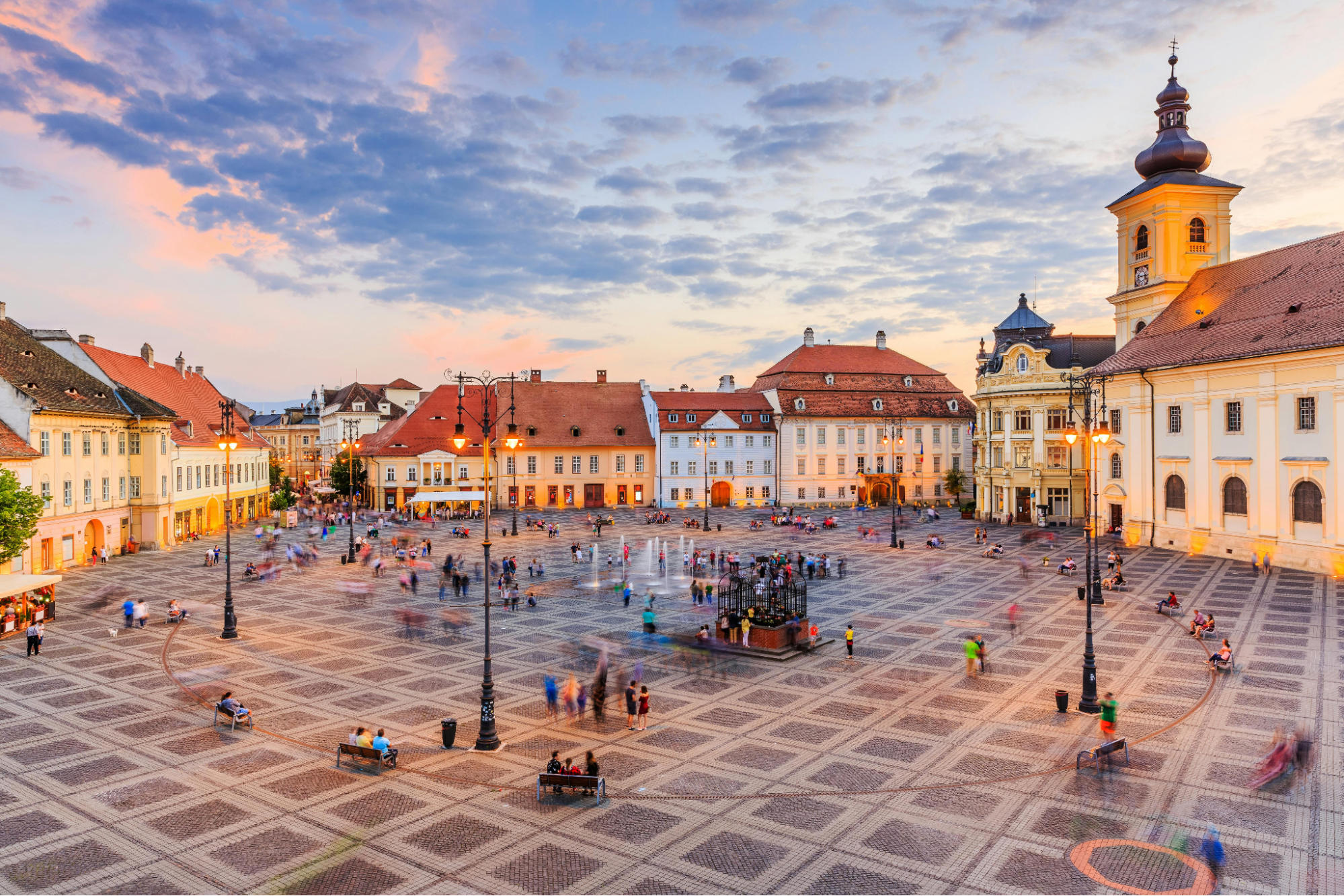
Image source: musement.com
Sibiu, with its rich cultural heritage, certainly offers one of the most captivating museum experiences in Romania. Each museum, from the imposing Brukenthal to the intimate Pharmacy Museum, tells a unique story about the fascinating history of this corner of Transylvania. The diversity of the collections, from classical European art to exotic artifacts from around the world, transforms the city into a complete cultural destination for any art and history lover. These are not just buildings with exhibits, but true portals to different eras and civilizations, waiting to be explored.
The flexible museum schedule, affordable tickets, and free admission days make Sibiu an ideal destination for cultural travelers in any season. Furthermore, the proximity of these cultural institutions allows for comfortable visits in a single weekend, without rushing and with time for reflection between visits. The available digital applications enrich the experience, providing additional information and personalized guidance through the impressive collections.
Whether you choose to follow the suggested route or create your own itinerary, each museum in Sibiu is an essential stop in discovering Transylvanian authenticity. Discover cultural Sibiu starting from Sennse Boutique Hotel, a refined retreat from which each museum becomes a memorable stop on your own personal tour. After a day full of cultural exploration, you can return to the comfort of the hotel, savoring the fresh memories of your experiences and preparing for the next day of discoveries. The charm of Sibiu is not limited to what you see in museums, but also to the unique atmosphere you feel when walking through its historic streets, connecting the past with the present in perfect harmony.